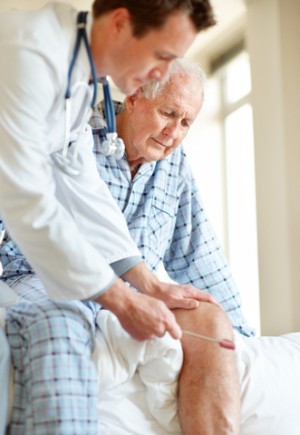Prevalence

The World Health Organisation (WHO) estimates that OA affects 9.6% of men and 18% of women older than 60 years of age (WHO Technical Report Series 2003). Increases in life expectancy and ageing populations are expected to make OA the fourth leading cause of disability by the year 2020 (Woolf et al 2003).
More than 1 million adults consult their GP each year with osteoarthritis (Royal College of General Practitioners - RCGP 2007) and it is the third most common diagnosis made by a general practitioner in older patients (McCormick et al 1995). It is estimated that 6 million people in the UK have painful osteoarthritis in one or both knees. Prevalence increases with age with 1 in 5 adults aged 50–59 to almost 1 in every 2 adults aged 80+ having painful osteoarthritis in one or both knees (Peat et al 2008). Before the age of 50, men have a higher prevalence and incidence of OA than women, presumably due to secondary changes due to trauma, while after the age of 50 women have a higher prevalence and incidence (Felson et al 1998).
More than 650,000 (12% of adults) in the UK have painful osteoarthritis in one or both hips, three quarters of whom are aged over 65 (Odding et al 1998). A further one and a half million have X-ray evidence of hip osteoarthritis (but may not have any symptoms) (Lanyon et al 2003).
There is a significant genetic component to the prevalence of knee OA, with heritability estimates from twin studies of between 39% and 65% independent of known environmental or demographic confounders (Spector et al 1996).
In 2011, a total of 4564 primary hip and 5105 knee replacement procedures were entered into the National Joint Registry (NJR) in Wales 20011/2 (NJR 2012). 97% of knee and 93% of hip replacement surgery were due to osteoarthritis (NJR 2012). The average BMI for knee replacement surgery has risen from 29.2 to 30.8 over the past 8 years and from 27.4 to 28.6 for total hip replacement. In 2011 40% of total hip replacement patients had a BMI between 25-29, 38% had a BMI greater than 30 (NJR 2012).

